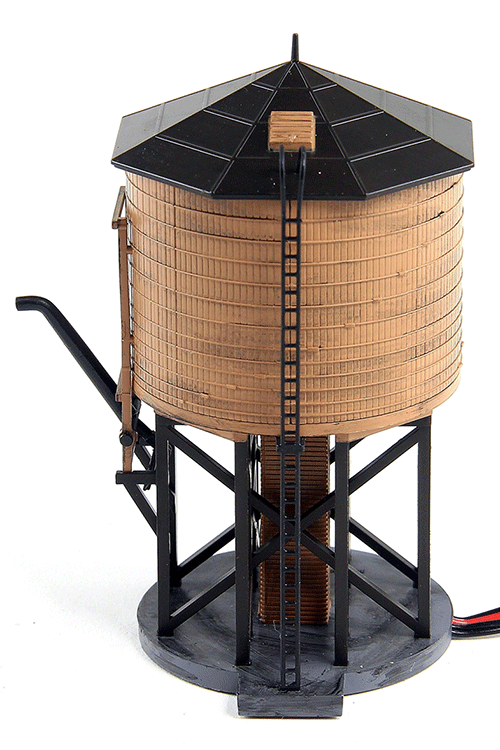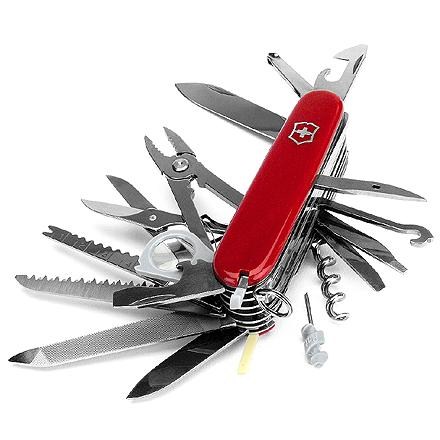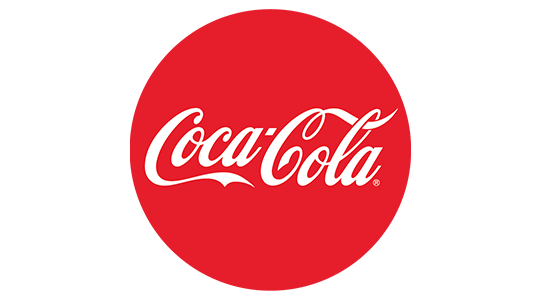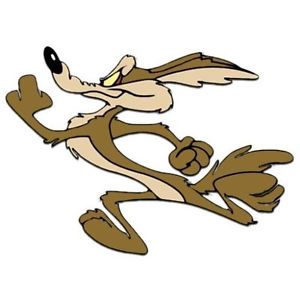Broadway Limited - 6131 - Steam Loco Water Tank
Click to see the details
history

| Stock Number | 6131 |
| Original Retail Price | 99.00 |
| Brand | Broadway Limited |
| Manufacturer | Broadway Limited Imports |
| Body Style | Broadway Limited Water Tank with Sound |
| Prototype | Steam Loco Water Tank |
| Paint Color(s) | Weathered Brown with a black roof |
| Release Date | 2016-07-01 |
| Item Category | Structures |
| Model Type | Tanks |
| Model Subtype | Water Tank |
| Model Variety | Steam Locomotive Servicing |
Model Information:
Powered by a standard 12 Volt DC power source, or an appropriate stationery accessory DCC decoder such as an AUXBOX or a Digitrax DS64, this factory assembled structure has a motorized and sound-synchronized fill spout.
Sound equipped with spout movement squeak, water hatch squeal and clang, water filling, and talking engineer effects, this plastic model is packaged with a push button actuator.
See a video of this tower in operation on the TroveStar Trains You Tube Channel
Sound equipped with spout movement squeak, water hatch squeal and clang, water filling, and talking engineer effects, this plastic model is packaged with a push button actuator.
See a video of this tower in operation on the TroveStar Trains You Tube Channel
Brand/Importer Information:
 Broadway Limited Imports, LLC defines itself as "the world's foremost producer of top-quality HO and N scale model trains".
Broadway Limited Imports, LLC defines itself as "the world's foremost producer of top-quality HO and N scale model trains".
The company was founded in 2002 and introduced its first N scale model in 2009.
Broadway Limited Imports is composed of a team of 15 fun loving individuals who are dedicated to creating the most realistic model railroading experience possible, with the best customer service possible.
The Broadway Limited Imports headquarters is located in Ormond Beach, Florida at 9 East Tower Circle. It's just under an hour's drive from Disney World.
About Broadway Limited Imports.

The company was founded in 2002 and introduced its first N scale model in 2009.
Broadway Limited Imports is composed of a team of 15 fun loving individuals who are dedicated to creating the most realistic model railroading experience possible, with the best customer service possible.
The Broadway Limited Imports headquarters is located in Ormond Beach, Florida at 9 East Tower Circle. It's just under an hour's drive from Disney World.
About Broadway Limited Imports.
Item created by: nscalemodeler160
on 2016-07-06 13:08:04
Last edited by: nscalemodeler160 on 2016-07-06 16:08:04
If you see errors or missing data in this entry, please feel free to log in and edit it. Anyone with a Gmail account can log in instantly.
Last edited by: nscalemodeler160 on 2016-07-06 16:08:04
If you see errors or missing data in this entry, please feel free to log in and edit it. Anyone with a Gmail account can log in instantly.







